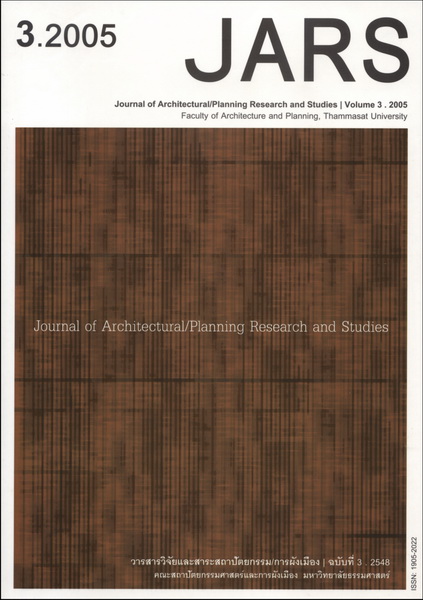Movement Navigator: A Relational Syntax Study on Movement and Space at King’s Cross and Piccadilly Circus Underground Stations, London, UK
Main Article Content
Abstract
The article explores the design and analytical method Relational Syntax [1], using both a syntactical approach as well as on-site observations. The architecture of King’s Cross and Piccadilly Circus Underground stations in London is used as the laboratory in which a theoretical discussion on movement and dimensional relations in architectural space is conducted. The two stations are among the most well-known and used in the London Underground system. Observations were made at these highly-used stations in order to establish an overall understanding of the spatial mechanism through social and natural movement. Considering the case studies as both texts and experiences, the article shows that spatial analysis and bodily movement can be explained, compared and put into sets of relations that can be pre-established or scripted during architects’ design activities. It is argued that the concept of ‘script’ [2] can be used bi-directionally in both the design and analysis of architecture. The research and arguments presented in this paper are being developed to form the basis of an application tool. Based on the theory of Relational Syntax, this application tool can be used to process building requirements generated from the design or analysis of a piece of architecture into scripts in order to systematically and aesthetically describe and generate spatial relations in buildings.
Downloads
Article Details

This work is licensed under a Creative Commons Attribution-NonCommercial-NoDerivatives 4.0 International License.
All material is licensed under the terms of the Creative Commons Attribution 4.0 International (CC-BY-NC-ND 4.0) License, unless otherwise stated. As such, authors are free to share, copy, and redistribute the material in any medium or format. The authors must give appropriate credit, provide a link to the license, and indicate if changes were made. The authors may do so in any reasonable manner, but not in any way that suggests the licensor endorses you or your use. The authors may not use the material for commercial purposes. If the authors remix, transform, or build upon the material, they may not distribute the modified material, unless permission is obtained from JARS. Final, accepted versions of the paper may be posted on third party repositories, provided appropriate acknowledgement to the original source is clearly noted.
References
Suvanajata, R. (2000). Relations in Architectural Space. Unpublished PhD. Thesis. London: University of London.
Lawrence, D. (1994). Underground Architecture. Middlesex: Capitol Transport Publishing.
Rasmussen, S.E. (1934). London: The Unique City. London: Jonathan Cape.
Market Report: October 1996 (1996). London: London Transport Marketing.
The concept of the Experiential dimension in architectural space is associated with bodily movement in building. There are three types: passage, junction and place. Suvanajata, R. (1995). Instrument of Dynamism. Unpublished Master of Architecture Thesis. New York: Pratt Institute.
Suvanajata, R. (2002). Relations in Architectural Space: Designs and Effects in Space of the Traditional Thai Houses and Temples. Journal of Architecture Chulalongkorn University. Bangkok: Faculty of Architecture Chulalongkorn University.
LUL Architectural Services (1993). Changing Stations: A review of recent London Underground Station designed by LUL’s Architectural Services and their Consultants. London: London Underground.
Glover, J. (1991). London’s Underground. London: Ian Allan Publishing.
Chief Engineer Directorate (March 2004). Station Planning. London: London Underground Limited.
Menear, L. (1983). London Underground Station: A Social and Architectural Study. Kent: Midas Books.
Lawrence, D. (1994) Underground Architecture. Middlesex: Capitol Transport Publishing.
Eisenman, P. (1987). Misreading. Houses of Cards. Oxford: Oxford University Press.
Koolhaas, R. (1995). Anyplace. Cynthia Davidson (ed.) Massachusetts: The MIT Press.
Suvanajata, R. (2000). Relations in Architectural Space. Unpublished PhD. Thesis. London: University of London.
Hillier, B. & Julienne Hanson (1984). Social Logic of Space. Cambridge: Cambridge University Press.
Suvanajata, R. (April-May 2002) Research in Designing Architecture. Journal of Association of Siamese Architects. Bangkok: ASA Publishing, 102-110.
Hillier, B. (1996). Space is the Machine. Cambridge: Cambridge University Press.


